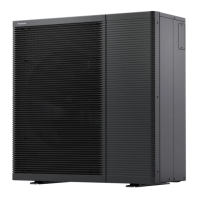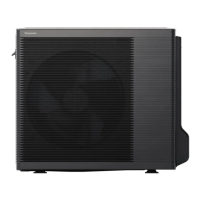Why does my Panasonic WH-WDG09LE5 outdoor unit emit water or steam?
- DDerek GordonSep 4, 2025
This is due to condensation or evaporation occurring in the pipes.

Why does my Panasonic WH-WDG09LE5 outdoor unit emit water or steam?
This is due to condensation or evaporation occurring in the pipes.
Why is COOL mode unavailable on my Panasonic Heat Pump?
The system may be locked to operate in HEAT mode only.
What causes loud refrigerant noise for several minutes in my Panasonic WH-WDG09LE5?
This noise is caused by protection control during de-ice operation when the outdoor ambient temperature is lower than -10 °C.
Why does the backup heater on my Panasonic WH-WDG09LE5 Heat Pump turn on automatically when disabled?
This is caused by the protection control of the heat exchanger and water circuit.
Why does steam come out of my Panasonic Heat Pump's outdoor unit when heating?
This is caused by the defrost operation in the heat exchanger.
How to improve the efficiency of HEAT/COOL mode on my Panasonic WH-WDG09LE5 Heat Pump?
To improve the efficiency of HEAT/COOL mode, make sure you set the temperature correctly, check that the panel heater/cooler valve is open, and clear any obstructions in the air inlet and outlet vents of the outdoor unit.
Why is my Panasonic WH-WDG09LE5 Heat Pump system not heating up instantly?
The Panasonic Heat Pump system will take some time to heat up the water if it starts to operate at cold water temperature.
Why does my Panasonic WH-WDG09LE5 Heat Pump start automatically when the timer isn't set?
The sterilization timer might have been set.
Why doesn't my Panasonic WH-WDG09LE5 heat up instantly?
If the system starts operating with cold water, it will take some time to heat the water.
Why does my Panasonic Heat Pump system operation switch off?
The Panasonic Heat Pump system might switch off due to the system's protection control. Specifically, if the water inlet temperature falls below 10 °C, the compressor will stop, and the backup heater will activate.
Specifies temperature ranges for heating and cooling modes.
Safety guidelines for appliance use, children, and dealer maintenance.
Safe electrical connection, cord usage, and earthing requirements.
Safety measures for R290 refrigerant, including leak risks and ventilation.
Procedures for refrigerant removal, evacuation, charging, and decommissioning.
How to set up and edit weekly timer patterns for operation.
Setting weekly timer patterns and holiday periods for system operation.
Checking recorded error codes and compressor performance data.
Configuring bivalent control patterns and heat source temperatures.
Configuring water and ambient temperatures for heating modes.
Setting water and ambient temperatures for cooling modes.
Configuring outdoor temperatures for switching between heat and cool modes.
Explains common operational symptoms and their causes.
Checks to perform before calling for servicing when the system is not working efficiently.
List of error codes displayed on the unit and their explanations.












